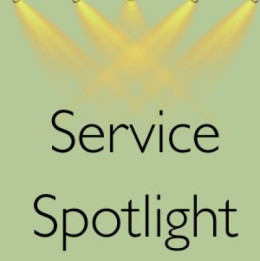Posted On: July 19, 2022 by Community HealthCare System in: News

A mural project at Onaga Community Hospital is now complete.
The hallway between the Fitness Center and the entrance to Redbud Plaza Assisted Living is graced with a recognizable local scene complete with pristine prairie, a cornfield, the Berges stone house and barn, the Henneberg stone barn, a creek burbling under a stone bridge, and a train heading off into the distance. The project was originally begun in 2018. When an artist who had been involved in the vision had to stop working on the mural because of other obligations, Erin Jeanneret-Lacey, a patient accounts representative in the Onaga Business Office, assumed responsibility and worked on it during her spare time. Progress was interrupted by the COVID-19 pandemic, but efforts resumed in the past few months. Onaga High School Art Teacher Becky Becker and Rock Creek High School Art Teacher Kyle Van Vogelpoel brought their students to help when possible, then Becker helped finish the project this summer.
CHCS deeply appreciates those who helped finish the mural. Debbie Berges from the Onaga Historical Society provided some historical context to help viewers understand why the scene was chosen to represent the heritage of our area.
The Berges stone house in the painting was built in 1875 (east half) and 1885 (west half) for William Berges and Wilhelmina “Mina” Kamm Berges. William was born in 1838 in Germany and married Mina in 1869 in Wisconsin. Mina was also born in Germany. The couple and their first-born daughter traveled by train to Centralia in 1870. William walked to Onaga to get a wagon and team of horses to return to Centralia for his family, and his stepbrother, Ernest Klinkert, sold the land he had homesteaded to William. Many area families can trace their roots to William and Mina. The farm has been occupied by five generations of the Berges family.
The Berges stone barn in the mural was built in 1881 to house eight horses. During the severe winter of 1889, several coffins were kept in the loft until the ground thawed in the spring. The Henneberg stone barn was commissioned by Emil Henneberg in 1886. The stone for this barn as well as the house was quarried north of the farm. According to a K-State professor of architecture, this was the last large stone barn built in Pottawatomie County, because the railroad’s arrival meant that building supplies could be shipped into the area.
The stone bridge in the mural is modeled on the Vermillion Creek Tributary Stone Arch Bridge, which was constructed in 1870. This was a popular type of bridge in Kansas because the stone and construction expertise was available locally. The construction was initially more expensive than a wood bridge, but stone bridges were strong and long-lasting. The use of local stone and labor made each bridge unique. Learn more about the bridge.
The train depicted in the mural represents the importance of the Kansas Central Railroad in the founding of Onaga. Paul E. Havens, president of KCR, filed a plat of Onaga on October 15, 1877. Construction of the railroad westward from Holton reached Onaga on December 2, 1877. KCR was later reorganized into the Leavenworth, Kansas and Western Railroad, which closed on January 10, 1935. The railroad was acquired by Union Pacific. Before the railroad, many settlers had homesteaded in the area and traveled great distances by wagon for supplies. Atchison was a common destination for trade. The railroad brought commerce into the area, thus establishing the town, so one can truly say the railroad built Onaga.
In the photos below, Erin Jeanneret-Lacey from CHCS and Becky Becker from Onaga USD 322 pose with the finished mural. CHCS is grateful to both of them for their efforts! Thank you to Debbie Berges from the Onaga Historical Society for providing the dates and background information for this piece.












-
View AllDebbie Berges | Jul 24th 2022 @ 9:48 PM
Watching this mural, or perhaps a collage of local heritage, grow over the past 3-4 years, it is truly worth taking the time to view and spending a few moments thinking about your own roots and how they might fit into the representation of this mural. Thank you to all the people who were a part of making this mural a reality for the community.